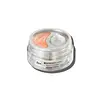What's inside
What's inside
 Key Ingredients
Key Ingredients

 Benefits
Benefits

 Concerns
Concerns

 Ingredients Side-by-side
Ingredients Side-by-side

Snail Secretion Filtrate
Skin ConditioningButylene Glycol
HumectantGlycerin
HumectantHelianthus Annuus Seed Oil
Emollient1,2-Hexanediol
Skin ConditioningNiacinamide
SmoothingWater
Skin ConditioningPalmitic Acid
EmollientArginine
MaskingCarbomer
Emulsion StabilisingStearic Acid
CleansingBetaine
HumectantCetearyl Olivate
Sorbitan Olivate
EmulsifyingSodium Polyacrylate
AbsorbentAllantoin
Skin ConditioningTocopheryl Acetate
AntioxidantPanthenol
Skin ConditioningHydroxyethyl Acrylate/Sodium Acryloyldimethyl Taurate Copolymer
Emulsion StabilisingSodium Hyaluronate
HumectantAdenosine
Skin ConditioningXanthan Gum
EmulsifyingMyristic Acid
CleansingCopper Tripeptide-1
Skin ConditioningAcetyl Hexapeptide-8
HumectantPalmitoyl Pentapeptide-4
Skin ConditioningPalmitoyl Tripeptide-1
Skin ConditioningPalmitoyl Tetrapeptide-7
Skin ConditioningSnail Secretion Filtrate, Butylene Glycol, Glycerin, Helianthus Annuus Seed Oil, 1,2-Hexanediol, Niacinamide, Water, Palmitic Acid, Arginine, Carbomer, Stearic Acid, Betaine, Cetearyl Olivate, Sorbitan Olivate, Sodium Polyacrylate, Allantoin, Tocopheryl Acetate, Panthenol, Hydroxyethyl Acrylate/Sodium Acryloyldimethyl Taurate Copolymer, Sodium Hyaluronate, Adenosine, Xanthan Gum, Myristic Acid, Copper Tripeptide-1, Acetyl Hexapeptide-8, Palmitoyl Pentapeptide-4, Palmitoyl Tripeptide-1, Palmitoyl Tetrapeptide-7
Water
Skin ConditioningHydroxypropyl Starch Phosphate
Propanediol
SolventBacillus Ferment
Skin ConditioningRetinol
Skin ConditioningMacrocystis Pyrifera Extract
Skin ConditioningChenopodium Quinoa Seed Extract
Skin ConditioningAngelica Archangelica Callus Extract
Skin ProtectingGlycerin
HumectantSorghum Bicolor Stalk Juice
Skin ConditioningAdenosine
Skin ConditioningHydrolyzed Vegetable Protein
Skin ConditioningSodium Polystyrene Sulfonate
Emulsion StabilisingAcrylates/C10-30 Alkyl Acrylate Crosspolymer
Emulsion StabilisingAminomethyl Propanol
BufferingPolysorbate 20
EmulsifyingPropyl Gallate
AntioxidantAllyl Methacrylates Crosspolymer
Emulsion StabilisingPvp
Emulsion StabilisingPhenoxyethanol
PreservativeEthylhexylglycerin
Skin ConditioningPotassium Sorbate
PreservativeSodium Benzoate
MaskingBHT
AntioxidantDisodium EDTA
Citric Acid
BufferingCI 16035
Cosmetic ColorantCI 19140
Cosmetic ColorantWater, Hydroxypropyl Starch Phosphate, Propanediol, Bacillus Ferment, Retinol, Macrocystis Pyrifera Extract, Chenopodium Quinoa Seed Extract, Angelica Archangelica Callus Extract, Glycerin, Sorghum Bicolor Stalk Juice, Adenosine, Hydrolyzed Vegetable Protein, Sodium Polystyrene Sulfonate, Acrylates/C10-30 Alkyl Acrylate Crosspolymer, Aminomethyl Propanol, Polysorbate 20, Propyl Gallate, Allyl Methacrylates Crosspolymer, Pvp, Phenoxyethanol, Ethylhexylglycerin, Potassium Sorbate, Sodium Benzoate, BHT, Disodium EDTA, Citric Acid, CI 16035, CI 19140
 Reviews
Reviews

Ingredients Explained
These ingredients are found in both products.
Ingredients higher up in an ingredient list are typically present in a larger amount.
Adenosine is in every living organism. It is one of four components in nucleic acids that helps store our DNA.
Adenosine has many benefits when used. These benefits include hydrating the skin, smoothing skin, and reducing wrinkles. Once applied, adenosine increases collagen production. It also helps with improving firmness and tissue repair.
Studies have found adenosine may also help with wound healing.
In skincare products, Adenosine is usually derived from yeast.
Learn more about AdenosineGlycerin is already naturally found in your skin. It helps moisturize and protect your skin.
A study from 2016 found glycerin to be more effective as a humectant than AHAs and hyaluronic acid.
As a humectant, it helps the skin stay hydrated by pulling moisture to your skin. The low molecular weight of glycerin allows it to pull moisture into the deeper layers of your skin.
Hydrated skin improves your skin barrier; Your skin barrier helps protect against irritants and bacteria.
Glycerin has also been found to have antimicrobial and antiviral properties. Due to these properties, glycerin is often used in wound and burn treatments.
In cosmetics, glycerin is usually derived from plants such as soybean or palm. However, it can also be sourced from animals, such as tallow or animal fat.
This ingredient is organic, colorless, odorless, and non-toxic.
Glycerin is the name for this ingredient in American English. British English uses Glycerol/Glycerine.
Learn more about GlycerinWater. It's the most common cosmetic ingredient of all. You'll usually see it at the top of ingredient lists, meaning that it makes up the largest part of the product.
So why is it so popular? Water most often acts as a solvent - this means that it helps dissolve other ingredients into the formulation.
You'll also recognize water as that liquid we all need to stay alive. If you see this, drink a glass of water. Stay hydrated!
Learn more about Water